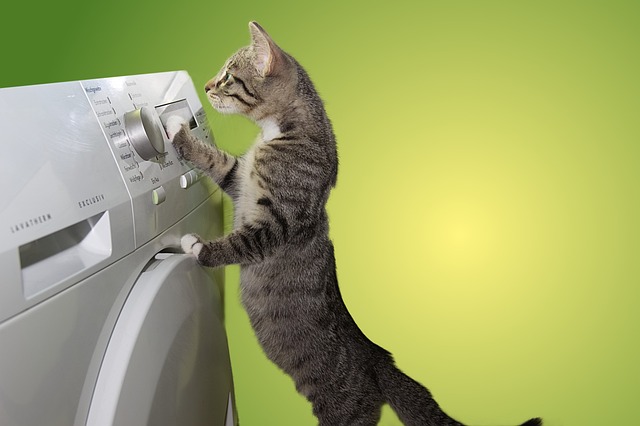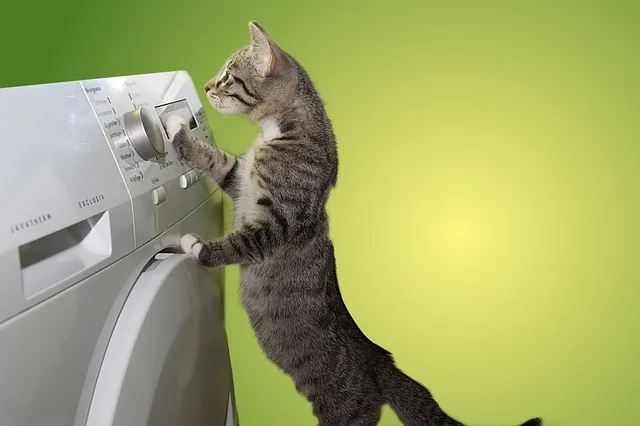What’s the Relationship Between Dryer Speed and Energy Consumption?
Imagine your dryer as a speedster on a racetrack. The faster it goes, the more fuel (or in this case, energy) it burns. When you set your dryer to a high-speed cycle, it’s like putting the pedal to the metal. This high-speed operation is efficient for drying clothes quickly, but it also demands more power from your electrical system. It’s the trade-off between speed and energy consumption.
On the flip side, if you opt for a slower drying cycle, you’re easing off the gas. This method is gentler on both your clothes and your wallet. Slower cycles use less energy but take more time to get your laundry dry. It’s a bit like taking a scenic drive instead of racing down the freeway—quieter and more relaxed, but slower.
Now, here’s where it gets interesting. Many modern dryers come with sensors and advanced settings designed to optimize energy use. These smart features adjust the drying speed based on the moisture levels in your clothes, which can help balance drying time with energy consumption. So, instead of always choosing the fastest setting, you might be better off letting your dryer’s technology do the work.
In summary, there’s a direct link between how fast your dryer spins and how much energy it uses. Faster drying means more energy, while slower drying uses less. It’s all about finding that sweet spot between efficiency and cost-effectiveness.
The Fast Lane to Energy Efficiency: How Dryer Speed Impacts Power Use
Here’s the deal: the faster your dryer spins, the more efficiently it can wring out moisture from your clothes. Think of it like squeezing out the last bit of toothpaste from the tube—if you do it quickly and effectively, there’s less left to deal with. When your dryer’s drum spins at higher speeds, it extracts more water from your clothes before they even hit the heat cycle. This means less drying time, which directly translates to lower energy usage.
Now, consider this: a dryer that operates at higher speeds doesn’t just dry your clothes faster; it reduces the time your machine needs to run. Less run time equals less electricity consumed. It’s like driving a car in the fast lane—you get to your destination quicker and use less fuel overall. So, a high-speed dryer could potentially shave significant amounts off your energy bill, all while keeping your laundry routine efficient and streamlined.
However, remember that speed alone doesn’t guarantee energy efficiency. Other factors like dryer maintenance, load size, and the type of clothes you’re drying play crucial roles too. But, optimizing your dryer’s speed is a fantastic starting point. It’s a bit like finding the right gear in a vehicle; when everything is in sync, you’re not just speeding up your laundry process, you’re also saving energy.
So next time you crank up the dryer, remember: faster can be better, as long as you’re using that speed to cut down on your energy use and keep your bills in check.
Speed vs. Savings: Unveiling the True Cost of Faster Dryer Cycles
Let’s break it down. Speedy dryer settings do shave minutes off your laundry routine, but here’s the catch: they often consume more energy. Imagine a car zooming down the highway versus one cruising at a relaxed pace. The faster car might use more fuel, right? Similarly, a high-speed drying cycle can gobble up extra electricity.
Now, consider the savings. While a rapid cycle might reduce your laundry time, those short bursts of high energy can actually increase your utility bills. It’s a bit like buying a premium coffee every day—it’s convenient but adds up quickly. On the flip side, slower cycles, though less glamorous, often use less energy and might be gentler on your clothes, extending their lifespan.
So, is the rush worth the spend? If you’re constantly running behind, a faster dryer might seem like a dream come true. But, if you’re looking to trim expenses and don’t mind waiting a little longer, opting for a slower cycle could be a smarter choice. It’s about balancing the immediate thrill of quick drying with the long-term impact on your wallet and wardrobe.
Think of it this way: speeding up the dryer might get you out of the house quicker, but it could cost you more in the long run. So, next time you hit that high-speed setting, remember: you might be trading time for extra bucks and wear on your clothes.
Quick Dry, High Bill? Exploring the Link Between Dryer Speed and Energy Costs
When a dryer works faster, it uses more energy in a shorter amount of time. Think of it like trying to fill a bucket with water from a fire hose instead of a garden tap; it’s more intense and uses up resources more quickly. While those extra spins can save you precious minutes, they also demand more electricity, leading to heftier utility bills.
High-speed dryers are often designed with advanced technology to whisk moisture away at lightning speed. This means they have powerful heating elements and high-speed fans that can really drive up energy consumption. It’s like having a high-performance car that guzzles fuel—great for speed, but not so great for your budget.
On the flip side, slower dryers are gentler on both your clothes and your energy bills. They use lower heat and longer cycles, which can be kinder to your wallet, but they might test your patience. The ultimate choice depends on your priorities: fast, efficient drying or a slower, more cost-effective approach.
So, next time you fire up that rapid-dry function, remember, speed doesn’t come without a cost. Balancing quick results with energy efficiency might just be the key to keeping both your clothes and your finances in top shape.
Turbo Drying: Does Faster Really Mean More Energy Consumed?
Here’s the scoop: turbo drying systems use advanced technology to dry items in a flash. They work by increasing air flow, temperature, or both, making the process more efficient. Imagine you’re using a hairdryer on the highest setting—it’s pushing out a lot of hot air to dry your hair faster. Similarly, turbo dryers are engineered to achieve rapid drying without compromising on performance.
But, and it’s a big but, does this quick efficiency come at a cost? Turbo drying can indeed be more energy-intensive compared to traditional drying methods. Why? Because accelerating the drying process often requires more power. Think of it as running your air conditioner on full blast to cool down your room quickly; it uses more electricity to get the job done faster.
However, here’s a twist: while turbo dryers might use more energy in the short term, they can be more efficient overall. Faster drying can mean less time running the dryer, which could translate into less energy used over time. So, while turbo drying may consume more energy per minute, it could potentially reduce overall energy use depending on how frequently you dry your items.

So next time you’re cranking up that turbo setting, remember—it’s a bit like choosing between taking a speedy shortcut or a scenic route. The faster path might use more energy initially, but it could also streamline your drying routine.
Beyond the Spin: How Dryer Speed Affects Your Utility Bills
Here’s the deal: the speed at which your dryer spins directly impacts how much energy it consumes. Think of it like driving a car. Just as accelerating too fast can burn more fuel, a dryer that spins at high speeds can guzzle up energy like there’s no tomorrow. The faster the spin, the more energy it requires to push those clothes around and get them dry.
But here’s the kicker: high-speed drying isn’t always the most efficient. It might seem like a great idea to speed things up, especially when you’re in a rush, but it can lead to uneven drying. This means your dryer has to work even harder, using more electricity to get your clothes perfectly dry. Plus, the faster you spin, the more wear and tear you’re putting on your machine, potentially leading to costly repairs or replacements down the line.
On the flip side, opting for a slower spin cycle can be gentler on your dryer and more energy-efficient. It might take a bit longer, but it can save you money in the long run. Plus, many modern dryers come with energy-saving features that optimize drying cycles based on the load size and fabric type, helping you cut down on unnecessary energy consumption.

So, next time you’re setting your dryer, remember: faster isn’t always better. Taking a moment to choose the right spin speed could be the key to keeping your utility bills in check and your dryer running smoothly for years to come.
The Speedy Dryer Debate: Is Faster Drying Worth the Energy Expense?
Think about it this way: a speedy dryer is like a race car—fast and powerful, but not exactly cheap to maintain. These high-speed machines use more energy to achieve quicker results. The science behind it involves higher temperatures and intense airflow, which, while getting your clothes dry faster, can also lead to a significant spike in your utility costs. It’s like paying extra for a VIP pass to get front-row seats at a concert; you get the benefit of convenience, but it comes with a price tag.
On the flip side, traditional dryers might not be as quick, but they’re often more energy-efficient. They take a bit longer, like a leisurely stroll versus a sprint, but they won’t make your wallet wince as much. If you’re looking to save on your energy bills and don’t mind waiting a bit longer, these might be your best bet.
Then there’s the environmental angle. Faster drying often means increased carbon footprint. If you’re eco-conscious, opting for a slower, energy-efficient dryer might align better with your green goals.
So, when weighing whether a speedy dryer is worth the energy expense, consider both your budget and your environmental impact. It’s like choosing between a quick fix or a long-term investment—each has its own set of trade-offs.
Efficiency or Expenditure? The Hidden Costs of High-Speed Drying
High-speed dryers might seem like a dream come true with their promise of reducing drying times to mere minutes. They’re designed to spin clothes at breakneck speeds, wringing out as much water as possible before your laundry even gets to the heat. Sounds fantastic, right? But before you start picturing yourself in a closet full of freshly dried clothes, let’s take a closer look.
First off, the energy consumption of these machines can be quite staggering. High-speed drying involves powerful motors and heating elements, which can lead to significant spikes in your electricity bill. It’s a bit like driving a sports car with a fuel-thirsty engine; you might get where you’re going faster, but it’ll cost you more in the long run.
Moreover, the intense spin cycles aren’t just tough on your wallet—they can also be rough on your clothes. The constant high-speed rotations can cause wear and tear on fabrics, leading to faster deterioration and more frequent replacements. So, in a way, high-speed drying might just be speeding up your need to buy new wardrobe staples.
Think of it like this: you’re trading off a few extra minutes of your time for the convenience of faster drying, but in return, you’re potentially draining your bank account and shortening the lifespan of your favorite outfits. It’s a classic case of quick fixes costing more than they’re worth.
So, while high-speed drying might seem like a speedy solution, it’s crucial to weigh the efficiency against the expenditure. Sometimes, the old-fashioned method of letting your clothes air dry or using a lower-speed setting might just save you more in the long run.

